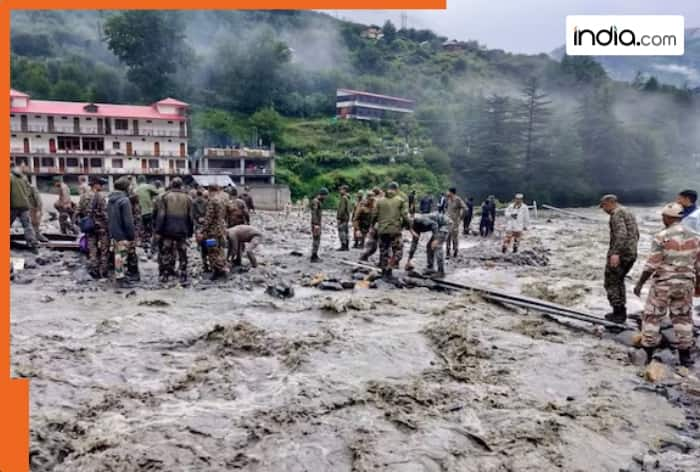According to scientists, cloudburst incidents are increasing.

New Delhi: Cloudburst incidents have caused massive destruction in hilly areas. It is a natural phenomenon in which heavy rains occur in a very short time, which causes floods and landslides. The risk of cloudburst is highest in certain areas of India. Do you know which are these 7 most dangerous zones and what the dangers are there?
Which are the 7 most dangerous zones of the country?
Jammu and Kashmir: Areas like Amarnath cave, Ganderbal, Pahalgam and Kishtwar are repeatedly affected. In 2022, a cloudburst in Amarnath caused heavy damage.
Ladakh: The Leh region was devastated by a cloudburst in 2010, killing more than 200 people.
Himachal Pradesh: Areas like Kullu, Kinnaur, Chamba, Dharamshala and Manali are vulnerable every year during the monsoon. Mandi witnessed 14 cloudbursts in 2025.
Uttarakhand: Kedarnath, Chamoli, Rudraprayag, Tehri and Pithoragarh are high-risk areas. Dharali was hit recently on 5 August 2025.
Sikkim and Arunachal Pradesh: Tawang, Upper Siang and North Sikkim also witness cloudbursts, although fewer are reported.
Maharashtra: A cloudburst in Mumbai in 2005 brought 944 mm of rainfall, submerging the city.
Kerala: A cloudburst in Idukki and Wayanad in 2018 led to massive floods, killing 324 people.
What kind of dangers are posed by cloudbursts?
Flash floods: Sudden strong flows of water sweep away homes, roads and vehicles.
Landslides: Rainfall causes soil and rocks to collapse, burying villages and property.
Loss of life and property: People are swept away. Cattle die. Homes are destroyed.
Communication disruption: Roads, electricity and mobile networks remain shut for several days.
Loss of crops: Floods submerge fields, causing huge losses to farmers.
Environmental damage: Forests and rivers are damaged, causing deterioration of the ecology.
What do scientists say?
According to scientists, cloudburst incidents are increasing. There are many reasons behind this.
Climate change: Earth’s warming keeps more moisture in the air, which causes heavy rains. For every 1-degree Celsius increase in temperature, the air absorbs 7% more moisture.
Mountainous geography: High mountains like the Himalayas lift moist winds, causing cloudbursts. This process is called orographic lift.
Monsoon and western disturbances: The combination of monsoon moisture and western disturbances creates unstable weather, which increases cloudbursts.
Glacier melting: Melting of Himalayan glaciers increases the moisture in the atmosphere, which further intensifies the rain.
Human activities: Deforestation, illegal mining and expansion of settlements weaken the soil, increasing the dangers.
















































